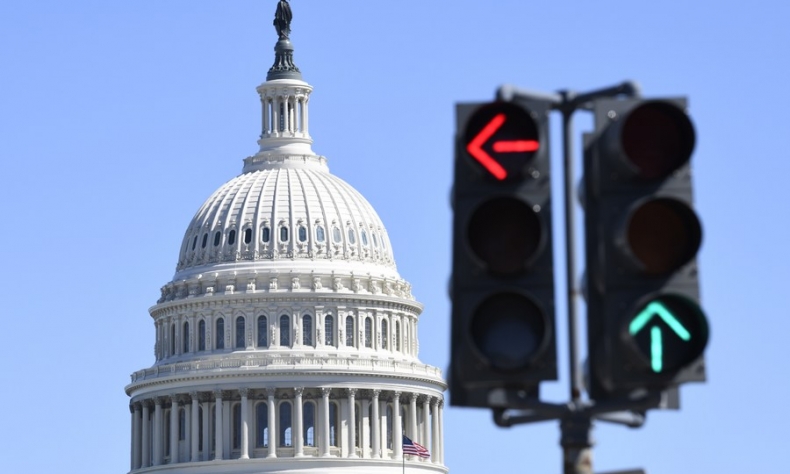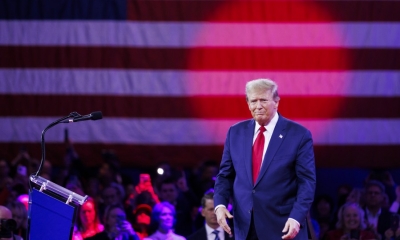Biden’s Anti-China Crusade Is a Policy Dead End

Washington must overcome its prevailing Cold War mindset. Reviving Yellow Peril propaganda and past anti-Communist crusades is a policy dead end.
US President Joe Biden is on a crusade against China. As he says himself, he is in the process of rallying “democratic” states against China. Will this American-led crusade vanquish the Chinese dragon or just fall on its own sword? Some reflection on US foreign policy is needed.
Today’s America appears to many as something out of the McCarthy era of 1950s Cold War hysteria. Some see it as a reflection of embedded American racism and in this case the bogeyman of 19th century “Yellow Peril” propaganda. Back then when Japan shocked Europe by defeating Russia in the Russo-Japanese War (1904-1905) this propaganda theme intensified. Earlier in the US, anti-Chinese racism surfaced in the late 19th century in the Chinese Exclusion Act of 1875, for example.
The psycho-cultural Western fear of East Asians, it has been argued, has roots in the Mongol invasions of Europe in the 13th century which reached eastward into Poland and Hungary. Today, the image of the Chinese Belt and Road development project seems to represent the new “Mongol” threat to Eurasia and particularly to Western Asia and Eastern Europe.
Such an observation is not so farfetched. Biden’s pronouncement that his mission is to rally “democracies”, particularly European, against China makes it clear. The White House has not hidden his intention to do this through active diplomacy in his visit to Europe. In fact, the White House has highlighted this self-proclaimed Biden crusade.
Europe appears to be seen as a white race bastion and base of finance capitalism defended by NATO (North Atlantic Treaty Organization). NATO expansion out of its European area of operations into Asia has been underway for some time. This is consistent with Western geopolitical strategies as developed last century especially by the British specialist Sir Halford Mackinder and the Dutch specialist Nikolas Spykman.
In recent American thinking since World War II, however, East Asians can be rallied against China. This was the basis of SEATO (Southeast Asian Treaty Organization, Manila Pact) created in 1954. Back then, Washington went into overdrive creating various alliance structures to contain the Soviet Union and China. Just as Hitler allowed some wealthy Jews to become “Honorary Aryans” the West allowed some Asians to become honorary Westerners.
A famous US diplomatic historian, Norman Graebner, dubbed this penchant for alliance pacts as “Pactomania”. The world saw the creation of NATO in 1949 and CENTO (Central Treaty Organization, Baghdad Pact) in 1955 not to mention ANZUS in 1951 (Australia-New Zealand-US).
So the international stage was set by the US creating all manner of alliances to contain the Soviet Union and China. Common sense, however, did prevail in some quarters such as the Bandung Conference of 1955 which emphasized the principles of peaceful coexistence. Twenty-nine countries participated representing some 54% of the world’s population. This effort to oppose colonialism and neocolonialism resulted in the formation of the Non-Aligned Movement.
So does some of this have a familiar ring today in light of US foreign policy under Biden? It certainly should sound familiar to those who recall the Obama administration in which Biden was vice president and very actively involved in foreign policy. The thrust of the Obama foreign policy known as the “Pivot” was to rally “democracies” against China and Pacific Russia. NATO would take care of the Western front and the Pivot would develop the Eastern front through military, diplomatic, information, and economic means.
On the Eastern front, the Obama Pivot involved revitalizing US alliances and partnerships. Hillary Clinton as secretary of state was quite clear about rallying the region using all means at US disposal. US national strategy was geared up and military, diplomatic, information, and economic tools were sharpened. Hillary tried to highlight a “Quad” (US, Japan, India, Australia) alignment against China.
The Trump administration maintained the main lines of US strategy and sharpened the economic warfare component with the trade and tech wars against China and Russia. In the first months of the administration, Vice President Mike Pence and secretary of defense James Mattis flew around the world reassuring allies that it was business as usual despite the fulminations of what many considered the carnival barker in the White House.
So is it any surprise that former Vice President and now President Joe Biden is moving forward the multifaceted and longstanding US strategy to contain China? Of course not, at least to seasoned observers.
How will this US Cold War crusade play in the international community? Not very well it appears. Many African, Middle Eastern, and Asian countries do not want to be placed in a position of taking sides between the US and China. They have said so in public and have made their positions known. The Biden crusade has no appeal for them as they pragmatically wish to protect their national interests and maintain flexibility and peace. They resent the attempt to impose a US diktat on them.

It is obvious to the world that the US has fallen into internal distress. Declining living standards, declining education, declining competitiveness, disintegrated infrastructure, increased economic social polarization, increased racial tensions, increased narcotics addition, increased poverty, etc. all those troubles do not present the picture of a good model. It seems to many that the US is tired and fading owing to imperial overstretch brought on by the hubris and delusion of its ruling class and by the incompetence of its political leaders.
In this context, how will Biden’s crusade play in Europe? The international situation is changing and multipolarity, polycentrism, and pluralism are the trends. Broadly speaking, peace and development are desired by all in the international community. US policy of hegemony is increasingly irrelevant to many. In the long run, US imperialism is not going to be rescued by Europe.
These days the rise of Asia is a key factor and the new situation is not just limited to the rise of China. The entire region is rising and Russia is in a process of renewing itself. The US, not to mention the G7, is less relevant in this new correlation of forces in the world. Other major powers, as well as middle and small powers, are factors in the emerging international system.
Back in the 1960s, Henry Kissinger as well as other scholars saw the eventual development of multipolarity in a world of major powers: US, Europe, Russia, China, Japan. Realistically, no single power can be the “leader” of the world. Cooperation, consultation, and constructive diplomacy are needed. The United Nations system has an important role to play and international law must be emphasized.
In Europe today, the Atlanticists tied to the US face rising pressure from pragmatists who seek economic and better diplomatic relations with China and Russia. Cold War Atlanticism as an ideology is anachronistic in today’s changed world. Biden may find support for his new crusade in the UK and among the English speaking “Five Eyes” group (US, UK, Canada, Australia, New Zealand) but it could become shaky over time as the international situation changes.
Washington must overcome its prevailing Cold War mindset. Reviving Yellow Peril propaganda and past anti-Communist crusades is a policy dead end. Only a new realistic constructive vision of the world and the US role in it will serve the long-term interests of Americans.
The article reflects the author’s opinions, and not necessarily the views of China Focus.
 Facebook
Facebook
 Twitter
Twitter
 Linkedin
Linkedin
 Google +
Google +







